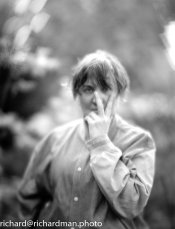Apo EL's are still hypothetically made, but only in fixed aperture for dedicated industrial applications. Apo Nikkors were marketed primarily for the print shop trade. The apo requirements for both lens series had to be significantly more stringent than either taking lenses or enlarging lenses like El Nikkors.
First, making a sharp enlarger or repro lens that is sharper than a LF taking lens is easy. See coverage... an APO Nikkor covers around 45º while photographers want 72º and up (even 110º) for the taking lens, so for taking shots you need more elements to end in less performance over the extended image circle. Correcting the rays in the center it's way easier if not having to also correct the angled rays that hit very off-center.
Then the "APO" stamp is quite flexible... Taking lenses were APO corrected since long ago before the APO stamp became a commercial trend, for example you won't notice a practical difference between the Sironar-N MC and the APO Sironar-N , but it is true that over time there had been incremental manufacturing enhacements tending to decrease the sample to sample variability.
The APO stamp makes more sense for repro lenses, simply because some non APO repro glass may be preferred. Many repro jobs did not require APO at all, even if it is a color job, if colors are separated in 3 negatives then we can expose all with a single color in the illumination (filtration), using the wavelength that is the best for the lens, anyway we remove any CA effect. In that case a
non APO glass will perform better that the APO because design has less restrictions from the Chromatic correction and design has more freedom to correct well Spheric Aberration, field curvature, distortion... in a simple 4 elements lens you cannot correct well all in a wide range of magnifications, so for Repro non APO vs APO makes quite a difference, requiring apo when a full spectrum illumination was required, like when making color separations.
Instead taking lenses were required "APO behaviour" since pan chromatic film/plates were marketed... if we don't want to use a band-pass color filter.
Today the APO commercial stamp says "hey, this is a very well corrected lens", but there is no tight criterion to say what's APO and what not, amazingly even we don't see color fringes in the DSLR corners because they are corrected/matched by the camera processor, with a distortion map for each color channel, only longitudinal CA may remain...
The APO Lanthar times are quite far, when a better chromatic correction could make a difference.
The APO Nikkors, IMO, they are not a miracle, it is a very well made 4 elements simple lens, and the narrow coverage angle restriction is not an issue for shooting long focals. The APO EL is another beast, 8 elemens in 4 groups, this is highly corrected glass that is to shine in a wide range of situations, subtituting several specialized lenses, single problem is price and scarcity, find a 480... Arne Croell said by 2008 that Burkett was using it by then. (
https://www.largeformatphotography....r-480mm-useful&p=400364&viewfull=1#post400364)











